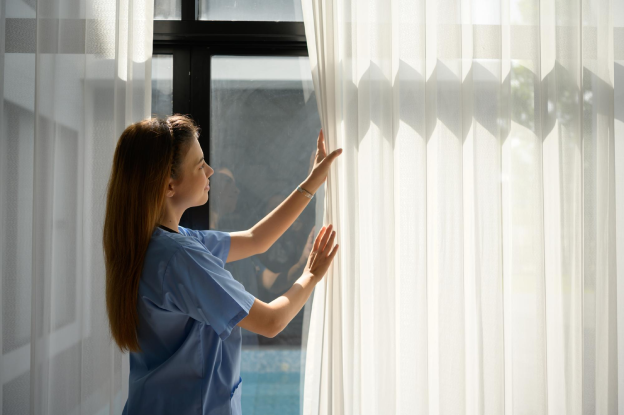For people with disabilities, reduced physical mobility can make everyday tasks difficult. Closing the curtains can be a challenge for someone who relies on a wheelchair to get around. Locking the doors can be impossible for someone with arthritis. And, forgetting to turn off the oven can be dangerous for someone who might be in the early stages of Alzheimer’s. However, smart home technologies are now making accessibility and independence possible in the home. Here’s how.
Smart home technologies are accessible by devices
Perhaps the most important feature of smart home technologies is that you can do just about anything with the tap of a button on a smartphone, tablet, remote control, or computer. Many of the features can be activated with voice commands, as well. That means that someone with limited mobility can open or close the curtains with automated window shades; turn the lights on or off with light controls, or unlock the front door to let someone in the house with automated locks—all while remaining stationary.
Smart homes are programmable
Another great feature of smart homes is that they can be programmed to do things at certain times of the day. Set the thermostat to warm up the home first thing in the morning before you even get out of bed and cool it down again at night. Program the front door, back door, and garage door to lock and close every evening at 9 P.M. You can even program a robotic vacuum to clean daily. Having programmable devices can ensure that you won’t forget to do something important.
Smart home technologies increase safety
Some people with certain disabilities are at a higher risk of having an accident at home, such as a fall or house fire. Smart home technologies can decrease that risk with voice-activated emergency calls if you fall, automatic or timed ovens that turn themselves off, or smoke alarms and carbon monoxide detectors that notify the fire department directly. Security cameras, motion detectors, and automated outdoor lights can scare off intruders or notify the police. Homes that don’t have some sort of security system are 300% more likely to be burglarized than homes that do, so these devices can even deter break-ins.
Smart features keep you connected and entertained
One thing that many people with a disability dislike is having to rely on family, friends, or a hired professional. Smart features, such as video calls on a smart television, can keep you connected to everyone without the need for multiple daily visits, which is especially important to decrease contact right now. Your loved ones will be less worried about you becoming ill, having an accident, or being a victim in your home when you’re alone if you have some smart home technologies, as well. You can even enhance your entertainment at home with a smart home theater system, which you could be craving if you’re faced with a stay-at-home order.
Smart homes can save you money
Smart homes can save you money in several ways. You can rely less on a hired in-home assistant or maid when you have the ability to maintain and clean your home with smart devices. You will also save money on energy bills when you use an automated thermostat, lighting, window shades, or even smart power strips that can go on standby. Conserve water with a customized, programmable sprinkler system or turn off the garden hose with a voice command. Many insurance companies are even giving customers a discount if they have smart home features.
Smart home technologies can improve your quality of life in all of the above ways and more. For some people, these smart features are useful and fun—for those with disabilities, they can be life-changing.




